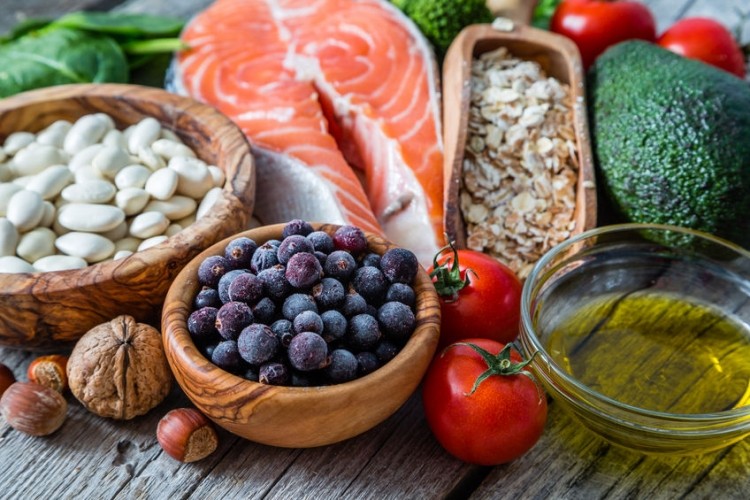
Based on the GEK Lab methodology, the rotation diet alternates different food groups throughout the week according to strictly scientific principles.
Its peculiarity, compared to other diets, is that it does not exclude any specific food from meals.
From the clinical experience perspective, the rotation diet intervenes not only on weight loss (especially when metabolic alterations depend on inflammation caused by foods), but also on many health issues related to inflammatory states: from recurring migraines to chronic fatigue, from irritable bowel syndrome to recurrent cystitis, covering a long list of autoimmune conditions and diseases, such as certain thyroid dysfunctions.
The main goal of the rotation diet is to counteract the inflammatory state caused by the repetition and monotony of the diet. This inflammatory state can impair the ability to lose weight and promote fat accumulation, which is why the rotation diet can also be effective for weight loss.
The peculiarity of the rotation diet is that its primary function is not solely weight loss, although it can be very effective for this purpose as well, but it works broadly on all conditions characterized by an inflammatory component.
What is food inflammation?
Several studies have confirmed that excessive or repeated consumption of certain foods leads to an increase in inflammatory cytokines (typically BAFF and PAF) in the body, which amplify or trigger inflammation.
This occurs due to the repeated contact, at the intestinal level, of certain food proteins with the immune system, which ends up producing an excessive amount of specific immunoglobulins. These, in turn, cause the increase of the inflammatory molecules BAFF and PAF.
What is the purpose of and why does the rotation diet work?
The rotation diet does not have weight loss as its only function (although it can be very effective for this purpose as well) but acts broadly on all conditions characterized by an inflammatory component.
The rotation diet is therefore useful not only for those who want to lose weight but also for all people who suffer from inflammation-related disorders and may not be fully aware of it.
By regulating inflammation through the diet, BAFF levels are lowered, insulin sensitivity is improved, and thus food intake will be more oriented toward providing energy for the muscles rather than accumulating fat.
But BAFF is also involved in inflammatory processes affecting joint fluids, so a decrease in its levels will also result in an improvement in arthritis and rheumatic pain.
Similarly, as PAF levels decrease, symptoms that are commonly attributed to allergies, such as rhinitis and hives, improve.
Aside from the examples, a rotation diet, in addition to helping rebalance body weight, restores energy and well-being.
Rotation Diet and “Healthy Plate”
If, with the same amount of calories, a dissociated diet is followed, one may encounter a series of annoying imbalances.
In the case of a meal unbalanced towards carbohydrates, an insulin spike will occur: the carbohydrates will be absorbed by the bloodstream and stored as fat, and the feeling of fullness will soon be followed by the desire to have a snack. If predominantly high-protein meals are consumed (as in the case of the paleo diet), the excess protein that is not immediately useful will be converted into fat through gluconeogenesis: when carbohydrates are reintroduced, a dangerous rebound effect will occur, quickly leading to fat gain. Just like an excess of sugars, an excess of fiber can also lead to an alteration of the intestinal microflora, causing bloating and other disturbances.
The solution is to follow the “Healthy Plate” principle from Harvard Medical School, which recommends including proteins, carbohydrates, and vegetables in every meal, including breakfast.
The balanced plate provides everything the body needs: carbohydrates, proteins, fibers, and micronutrients (such as vitamins and minerals). It keeps insulin secretion under control, thus prolonging the feeling of fullness and preventing the need for snacks or meals to break the fast, while maintaining high levels of well-being and energy.
What are the Great Food Groups?
Epidemiological studies have shown that irritable bowel syndrome in China is correlated with rice, soy, and corn, while in Western countries, it is correlated with wheat, milk, and yeast.
These differences, clearly linked to dietary habits, show, along with other evidence, that no food is inherently harmful; rather, it is the repetition or excessive intake of certain foods that causes problems.
This happens because the immune system similarly recognizes classes of foods.
In other words, when the excessive consumption of a single food causes inflammation, it will also be supported by all other foods in the same group.
Based on these similarities, foods are classified into five main groups.
- Wheat and Gluten: This group includes bread, pasta, and all baked goods containing wheat flour. It also includes gluten-free products that may contain other wheat proteins, such as soy sauce and kamut.
- Nickel: This group includes tomatoes, spinach, oats, mushrooms, cocoa, and canned foods, such as canned tuna, sardines, etc.
- Yeasts: This group includes vinegar, alcohol, mushrooms, cheese, baked goods, industrial citric acid (E330), soy sauce, yogurt, industrial mayonnaise, and honey.
- Milk: This group includes milk and dairy products (yogurt and cheese), as well as beef and its derivatives, such as bresaola (lactose intolerance, which is a sugar intolerance, is enzymatic and not related to the inflammation associated with the milk group).
- Cooked Oils: All foods containing cooked vegetable oils, such as cookies, toast, crackers, flatbreads, roasted nuts, sautéed foods, and fried foods.
Finally, some foods do not belong to any food group and are identified individually: for example, eggs, pork, soy, and potatoes.
How does the rotation diet work in practice?
How is the inflammatory state derived from food groups identified?
The Recaller Medical Program does exactly this: it helps determine if an excess of specific foods is being consumed by measuring the inflammation in the body, assessing both the quantity of specific food IgGs and the inflammatory values through BAFF and PAF levels.
It also evaluates the possible presence of mutations in the TNFSF13B gene, which are linked to the development of autoimmune diseases caused by food-induced inflammation.
The doctors and specialists at GEK Lab, experts in precision medicine, will suggest a personalized nutritional and integrative path based on the results of the report
The key point of the rotation diet is that, to restore the physiological relationship with food, reduce inflammation, and achieve weight loss and well-being, it is necessary to maintain contact with all food groups, without eliminating any.
For this reason, there are days of strict abstinence and others when even the groups that cause inflammation are allowed (usually Wednesday, Saturday evening, and Sunday).
It is important to emphasize that it is not the exact day of the week that matters, but the correct alternation of days of abstinence and reintroduction. This time frame, of at least 36 hours, allows for the so-called immune reset.
The reintroduction meals are initially no more than 7 out of 21 total weekly meals. The goal is, gradually, based on the perception of well-being, to increase the free meals, until only two days of abstinence per week are maintained, restoring the friendly relationship with food.
By adopting a rotation diet, it will be possible to support the rebalancing of body weight and regain well-being and energy. By following a healthy and mindful diet, with respect to one’s individuality, symptoms related to inflammation will improve or disappear, while also preventing future health problems.
Edited by the scientific editorial team





